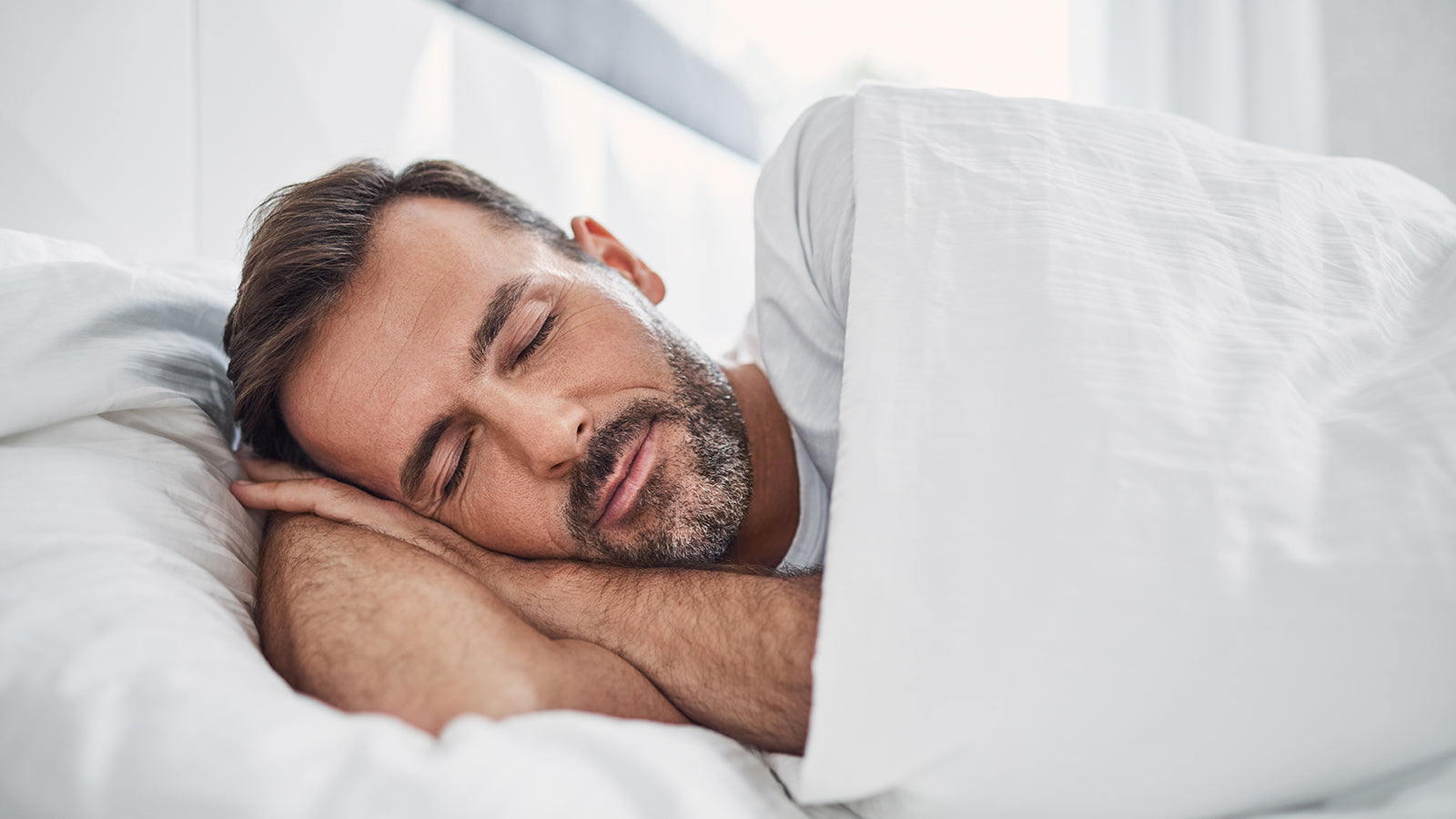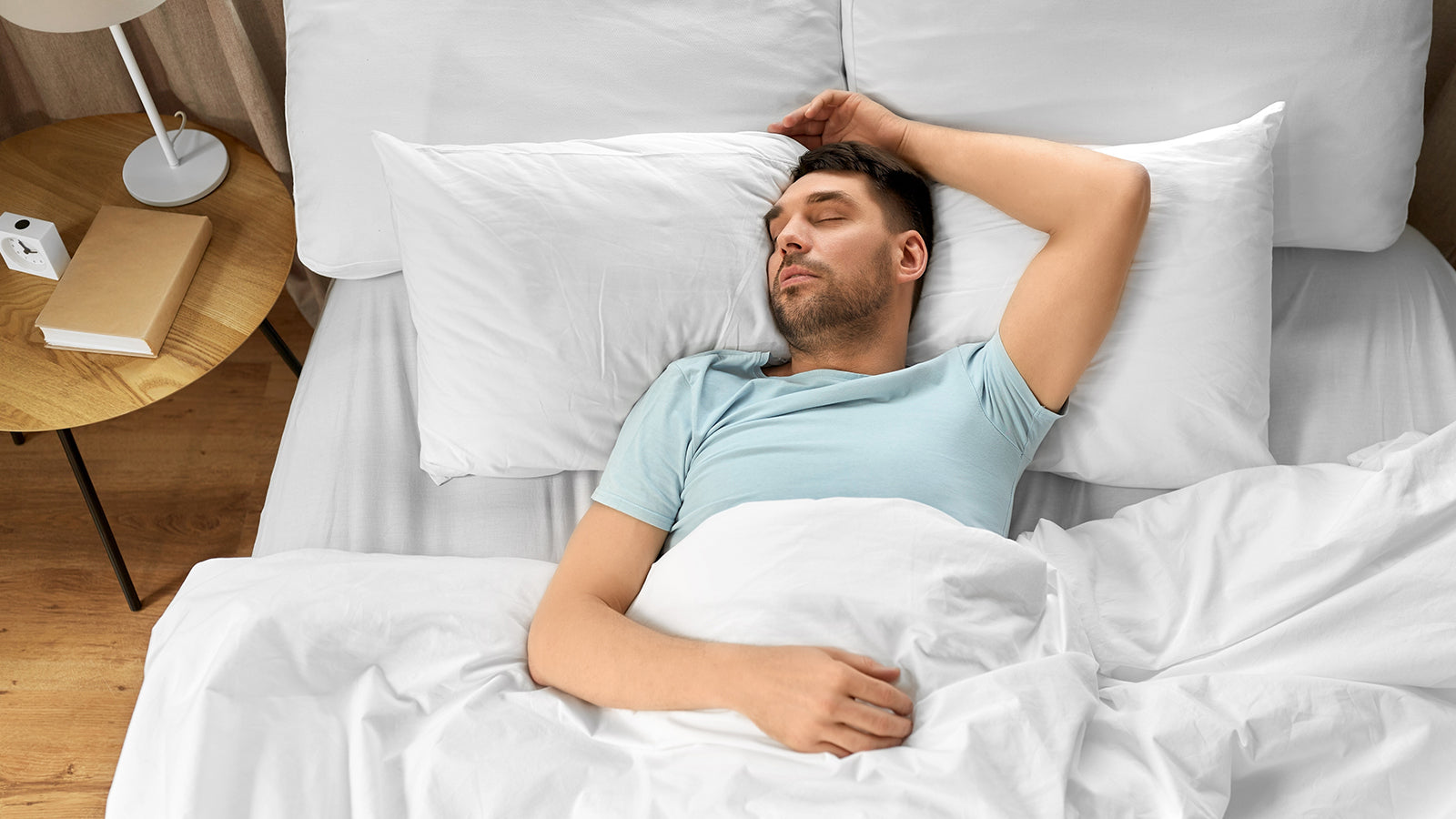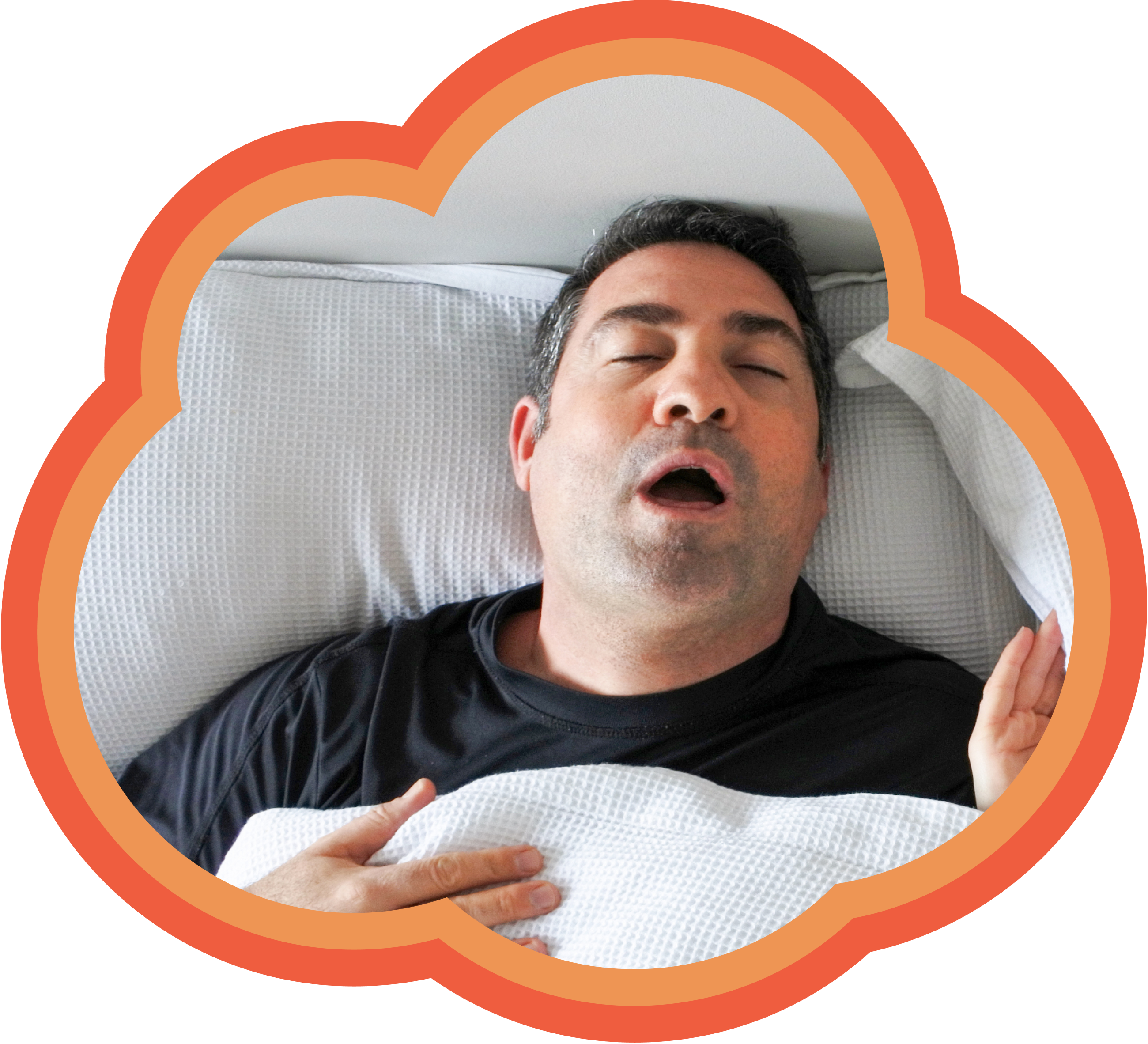
SLEEP APNEA 101
When someone has sleep apnea, their throat muscles relax too much during sleep, causing temporary pauses in breathing. It’s more common than you might think—around 22 million Americans deal with sleep apnea. If you’re just starting to learn about sleep apnea and suspect you might have it, it’s important to know the signs. Take our quiz to see if you might be experiencing sleep apnea.
Types of sleep apnea

Obstructive sleep apnea (OSA) is a common sleep disorder that affects how you breathe while you sleep. Risk factors include excess weight, age, family history, alcohol use, smoking, nasal congestion, and various medical conditions. Men are 2-3 times more likely to have OSA, but women’s risk increases with weight gain or after menopause.

Central sleep apnea (CSA) happens when the brain doesn’t signal the body to breathe properly. Risk factors include age, particularly among middle-aged and older adults, as well as being male. Heart disorders like congestive heart failure, use of long-acting opioid medications, and a history of stroke also increase risk.
SLEEP APNEA BY THE NUMBERS

COMMON SYMPTOMS OF SLEEP APNEA
Living with obstructive sleep apnea can feel like being utterly drained, no matter how long you sleep. Nighttime can be a restless ordeal, with frequent awakenings and morning symptoms like a sore throat or headaches. Learn more about the warning signs.
What causes sleep apnea?
Obstructive Sleep Apnea Causes
In OSA, relaxation of throat muscles and the tongue can obstruct the upper airway, leading to breathing pauses. Factors such as excess weight, which increases the risk of fat deposits around the upper airway, and structural abnormalities in the jaw or airway can contribute to OSA.

Central Sleep Apnea Causes
CSA arises from the brain’s inability to send proper signals to control breathing muscles. Other contributing factors include age, genetics, alcohol or sedative use before bed, and underlying medical conditions like heart disease and high blood pressure.




What Does Sleep Apnea Feel Like?
Many people describe the frustration of feeling exhausted, no matter how long they sleep. Imagine waking up in the morning, but instead of feeling refreshed, you’re greeted by overwhelming fatigue that lingers throughout the day. Tasks that once brought joy, like exercising or spending time with family, can feel like monumental challenges. You may find yourself nodding off at traffic lights or struggling to stay awake during a meeting. The emotional toll is just as significant, with feelings of depression and irritability creeping in as sleep deprivation takes its toll.

What affects Sleep Apnea?
Sleep apnea can affect anyone, including children, but certain factors can increase your risk. For OSA, risk factors include excess weight, which can lead to fat deposits around the upper airway, narrowing it and obstructing breathing. According to the Mayo Clinic, men are 2-3 times more likely to have OSA, but women’s risk increases with weight gain or after menopause (learn more about specific risk factors for women here). Additional factors include:



